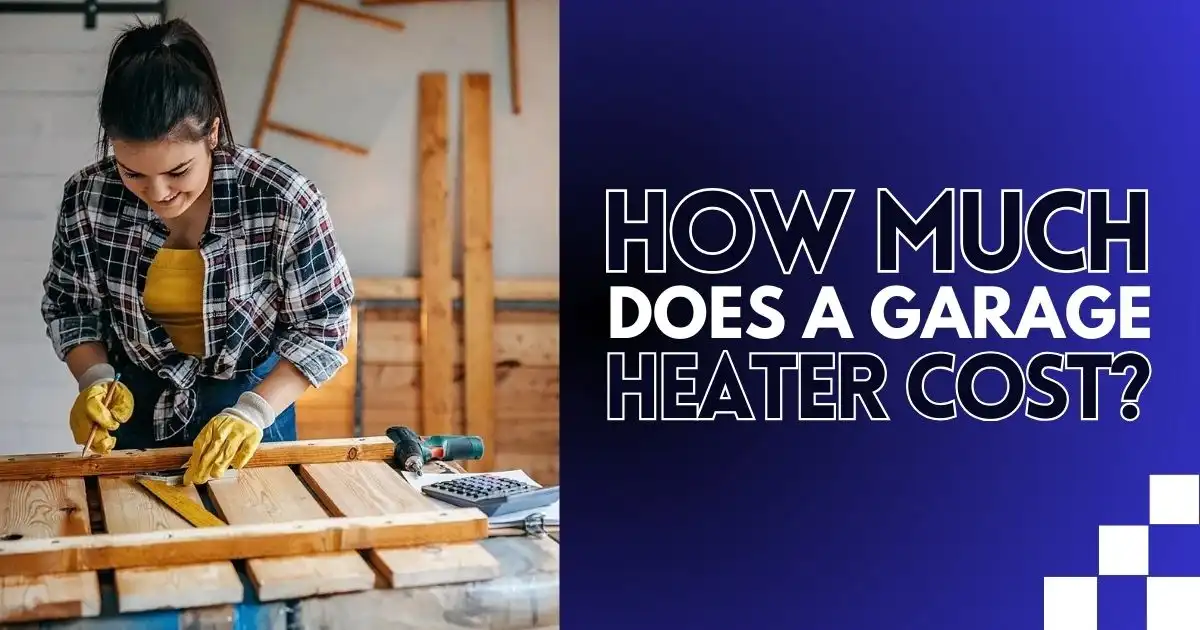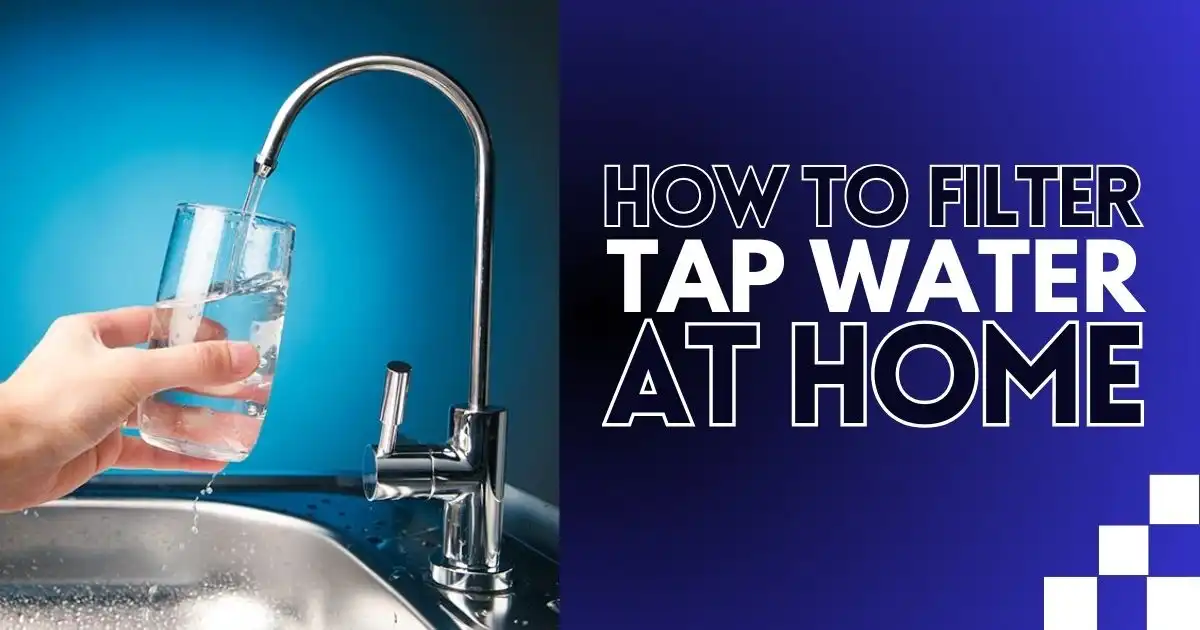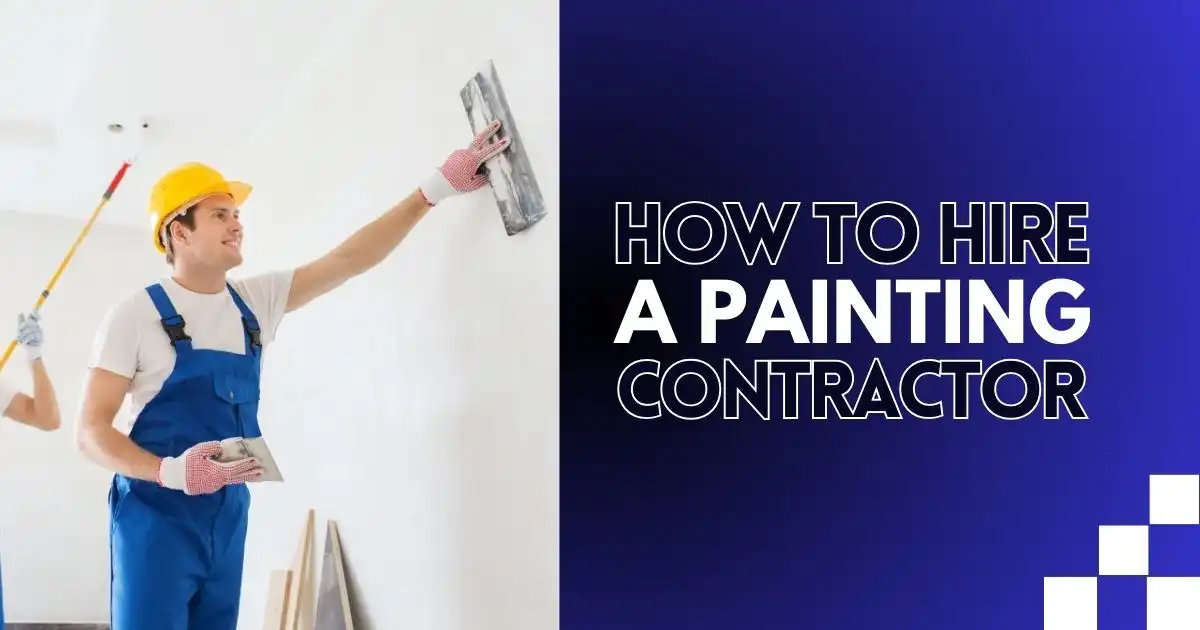Dealing with plumbing problems like a broken PVC pipe can be a real hassle for homeowners. It often starts small—a tiny crack or a small leak—but can quickly spiral into a bigger issue. That steady drip can lead to water pooling in areas it shouldn’t, causing damage to walls, floors, or even your home’s foundation.
Beyond the mess and inconvenience, there’s the stress of rising water bills and the looming cost of major repairs if the problem isn’t addressed early. It’s easy to ignore at first, but have you ever thought about how much more it could cost later if left unchecked? Sometimes, taking action sooner can save you from a lot of frustration and expense down the road.
What Is a PVC Pipe?
PVC pipes are made from a strong plastic called polyvinyl chloride. These pipes are popular because they are durable, affordable, and don’t rust over time. They are a key part of plumbing systems in most homes, handling both water supply and drainage. These pipes are popular for many reasons: they are lightweight, easy to install, and cost-effective. Unlike metal pipes, PVC doesn’t rust or corrode, making it a long-lasting option.
PVC pipes can handle a wide range of temperatures and pressures, which makes them suitable for both hot and cold water systems. They are also resistant to chemicals and bacteria, helping to maintain clean water flow. If it’s transporting water to sinks and showers or removing wastewater from your home, PVC pipes are essential for a reliable and efficient plumbing system.
4 Common Reasons for PVC Pipe Leaks
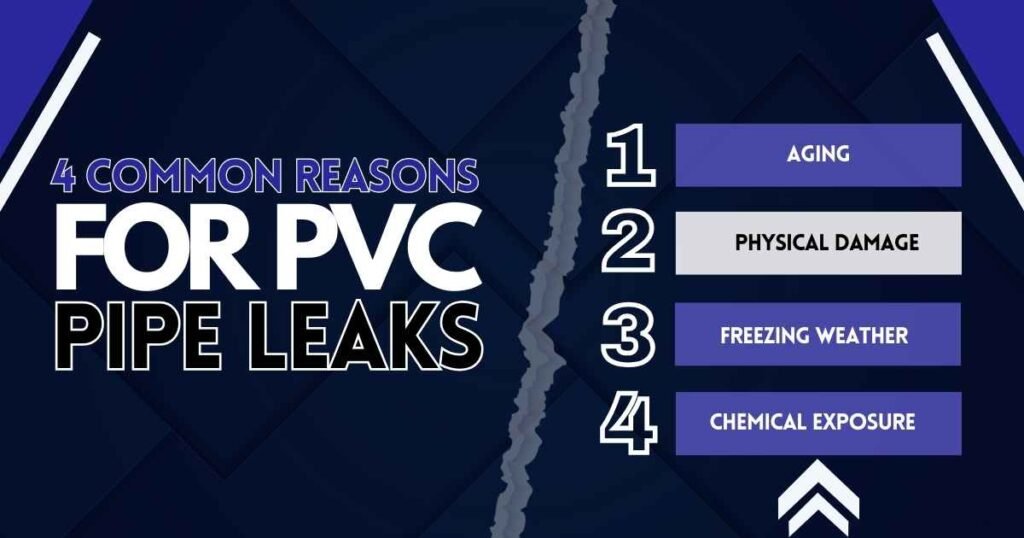
PVC pipes are strong, but they aren’t unbreakable. Over time, certain factors can cause them to weaken and leak. Here’s a closer look:
1. Aging
Like most materials, PVC pipes don’t last forever. Over the years, constant water flow, changing temperatures, and exposure to sunlight can cause them to become brittle. This is especially true for older homes where PVC pipes may have been installed decades ago.
According to experts, PVC pipes have an average lifespan of 25 to 40 years, depending on the conditions. If your home’s plumbing is getting old, it’s a good idea to have the pipes inspected to catch issues early.
2. Physical Damage
Physical damage can happen in many ways, such as hitting a pipe during construction work or placing heavy objects on buried pipes. Improper installation, like forcing pipes into place or using the wrong fittings, can also weaken them, making PVC pipe repair necessary later.
For example, a minor crack caused by a construction tool might go unnoticed, but over time, pressure from water flow can make the crack grow, leading to leaks that require immediate attention.
3. Freezing Weather
When water freezes inside PVC pipes, it expands and puts pressure on the pipe walls, which can lead to cracks or bursts, often requiring PVC repair. In areas with cold winters, uninsulated or outdoor pipes are especially at risk.
For instance, a garden hose left attached to an outdoor faucet during freezing temperatures can cause the connected PVC pipe to break. Insulating pipes or draining outdoor plumbing before winter can help prevent damage and the need for costly PVC repair.
4. Chemical Exposure
Harsh chemicals, such as cleaning agents, industrial waste, or even water with high acidity, can slowly eat away at PVC pipes. This is a common problem in areas with poor water quality or in industries where chemical waste is drained through pipes.
For example, a homeowner who pours strong drain cleaners down the sink might unknowingly weaken the pipes over time. Using safe cleaning products and ensuring proper drainage systems can help avoid this problem.
Leaks might seem like a small inconvenience, but they can cause serious damage if ignored. If you notice any signs of a leak, like damp spots, reduced water pressure, or unusual water bills, it’s important to call a plumber right away to address the issue before it gets worse.
7 Ways to Fix a Broken PVC Pipe
Fixing a broken PVC pipe is essential to prevent water damage and costly repairs. If you’re wondering how to repair PVC pipe, the approach depends on the size of the leak and the materials you have. Here are seven methods to fix a broken PVC pipe, along with helpful examples and facts:
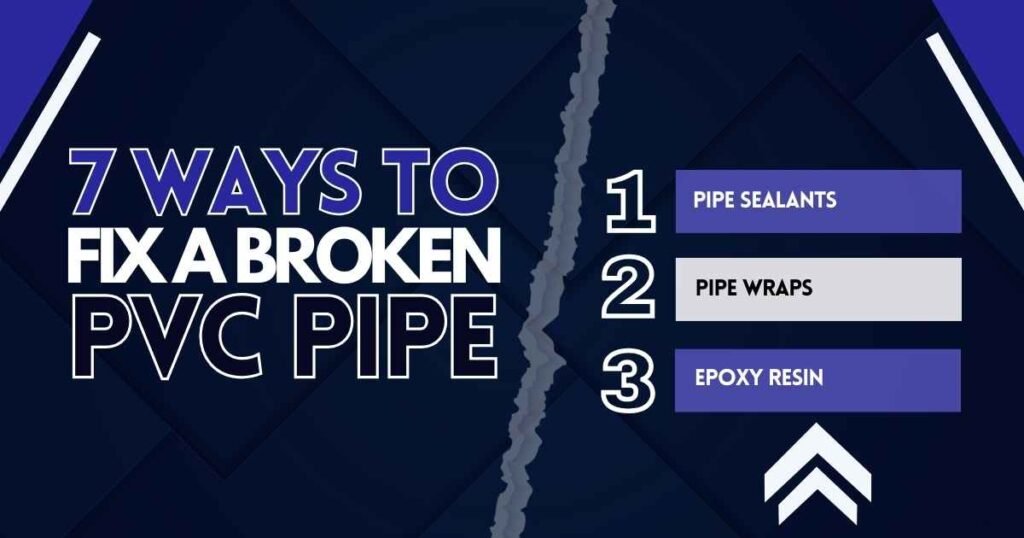
1. Pipe Sealants
Did you know PVC cement chemically bonds to the pipe, creating a strong seal? However, it works best for low-pressure systems and may not be suitable for larger cracks. Pipe sealants, like PVC cement, are quick and effective solutions for fixing PVC pipe leak issues, especially for small cracks or leaks.
They’re widely available at hardware stores and can seal minor damage effectively. For example, if you notice a small leak around a joint, cleaning the area and applying PVC cement can stop the leak within minutes.
2. Pipe Wraps
Pipe wraps or repair tapes are ideal for small leaks and cracks. They’re made of silicone or rubber and can be tightly wrapped around the leaking spot.
For instance, if a hairline crack forms on a section of your outdoor sprinkler system, using a pipe wrap can stop the leak until you can replace the pipe. A fun fact is that many pipe wraps are heat-resistant, making them suitable for both hot and cold water pipes.
3. Epoxy Resin
Epoxy resin is a strong and versatile option for fixing leaks. It can handle both small and moderate damage.
For example, if you have a pinhole leak in a PVC pipe under your sink, applying epoxy resin over the cleaned and dried area can seal it permanently. Did you know epoxy resin is often used in high-pressure plumbing systems because of its durability? Just ensure you allow enough time for it to cure completely.
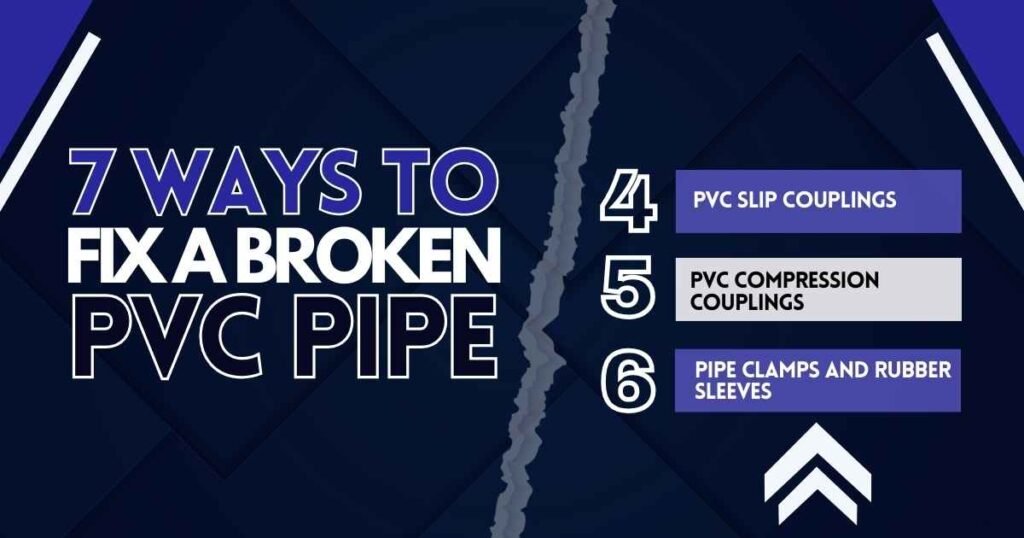
4. PVC Slip Couplings
Slip couplings are great for repairing leaks without cutting the pipe. These couplings slide over the damaged area and seal it with rubber gaskets. For example, if there’s a leak in the middle of a long pipe, you can use a slip coupling to seal it without having to replace the entire section.
Many homeowners prefer this method because it’s quick and requires no special tools. Fun fact: slip couplings can also work for underground pipes, saving you from costly excavation.
5. PVC Compression Couplings
Compression couplings are similar to slip couplings but provide a tighter, more secure seal. These couplings are made of two parts that you tighten around the leaking area to create a watertight bond. They are strong enough to handle moderate leaks and even higher water pressure, making them a reliable option for more serious plumbing issues.
For example, if you notice a leak near your home’s main water supply pipe, a compression coupling can stop the leak quickly without needing to replace the entire pipe. These couplings are easy to install with basic tools and don’t require cutting the pipe, saving time and effort.
6. Pipe Clamps and Rubber Sleeves
This method combines a rubber sleeve to cover the leak and a pipe clamp to hold it in place. For instance, if you have a cracked pipe in your backyard irrigation system, placing a rubber sleeve over the crack and securing it with a clamp can temporarily stop the leak.
A helpful fact is that pipe clamps are often used in industrial settings because they can withstand extreme water pressure. While this method is temporary, it’s a lifesaver when you need time to plan a permanent fix.
7. Cut-and-Replace
The cut-and-replace method is the best solution for extensive damage or major leaks. For example, if a PVC pipe in your plumbing system has a large crack or has split entirely, cutting out the damaged section and replacing it with a new piece is the most reliable fix.
Did you know PVC pipes are affordable and easy to cut, making this a cost-effective repair? If you’re unsure about the process, hiring a professional, like Vegas Plumbing Pros, ensures the repair is done correctly and prevents future problems.
Knowing these repair methods and acting quickly, you can safeguard your plumbing system and prevent bigger problems. Select the best solution for your situation, and don’t hesitate to consult a professional when needed.
Fix Small Leaks, Save Big Troubles
Many homeowners ignore small plumbing issues, but even a tiny crack in a PVC pipe can lead to costly repairs. Fixing it isn’t just about stopping a leak—it’s about protecting your home, saving money, and avoiding bigger problems. The real issue is delaying the repair or not using the right tools. Act quickly, and you’ll keep your home safe, secure, and running smoothly. Small actions now can prevent major headaches later.
At Vegas Plumbing Pros, we understand the importance of a reliable plumbing system and how frustrating leaks can be. Our skilled team provides top-notch solutions, ensuring thorough and lasting repairs backed by years of experience. If you’re a Las Vegas homeowner in need of plumbing, heating, A/C, or appliance repair services, contact us today to learn more!
FAQs
Can you repair a broken PVC pipe?
You can fix PVC pipe joints and leaks using repair epoxy, a reliable option for PVC pipe leak repair. This epoxy comes as a putty or liquid. Start by preparing the epoxy as instructed by the manufacturer. Then, apply it to the damaged pipe or joint and let it set for about 10 minutes before use.
What is the best glue for repairing PVC pipe?
For regular home repairs, heavy-bodied cement, also called Type P cement, is the best PVC glue to use, especially for pressure pipes. This glue dries a bit slower, making it easier to work with. Remember, you’ll also need a PVC primer to prepare the pipes for a stronger and more secure bond.
How do you repair a PVC leak without cutting it?
Four quick ways to fix a leaking PVC pipe include using silicone or rubber repair tape, wrapping it with rubber and securing it with a hose clamp, applying repair epoxy, or covering it with fiberglass wrap. If the damage is severe, replacing PVC pipe might be the best long-term solution. Read on to learn more about these simple fixes for leaky pipes.
How do I fix a broken water pipe?
To fix a broken water pipe, start by turning off the water supply to stop the leak. Next, identify the damaged area. For small leaks or PVC crack repair, you can use repair tape, epoxy, or a pipe clamp as a temporary fix. Clean and dry the area before applying these materials for the best results.

